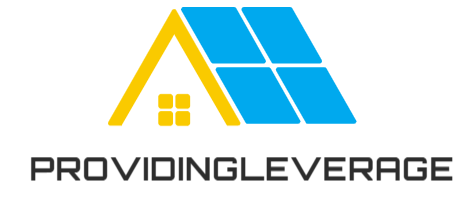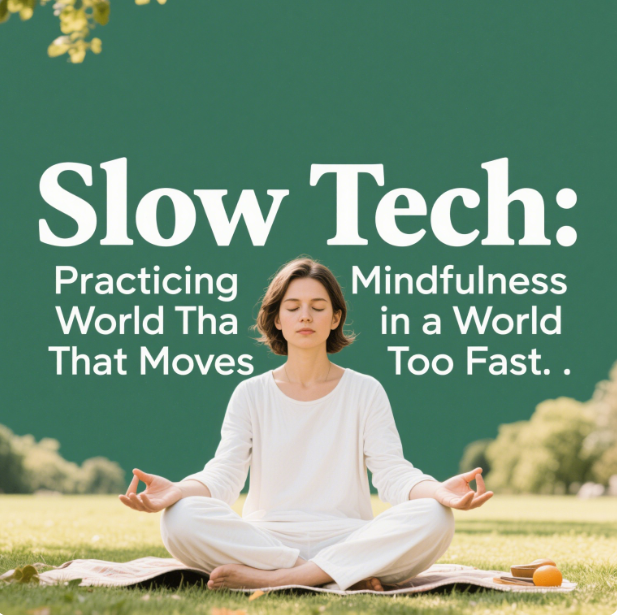We live in an age where everything is designed for speed. Fast-loading apps, real-time notifications, lightning-quick responses—our digital lives move at breakneck pace. The faster we work, the more productive we seem. But what happens when our minds can’t keep up with the tempo of our technology?
Somewhere along the way, many of us began to feel it—that quiet, persistent hum of overwhelm. Not from any one app or platform, but from the cumulative speed of it all. It’s the pressure to always be online, to reply instantly, to keep scrolling, swiping, reacting, updating.
In response to this, a new philosophy is gaining quiet traction: Slow Tech.
Like its cousin movements—slow food, slow living—slow tech isn’t about rejecting technology. It’s about redefining our relationship with it. It’s an intentional shift toward using technology in ways that align with our values, attention, and well-being.
The Default: Always On, Always Reacting
Much of our digital experience is reactive. We check our phones before we get out of bed. We switch tabs compulsively. We measure our worth by engagement metrics. We fill every gap in our day with more content, more input.
These habits didn’t appear out of nowhere. Most modern digital tools are designed to maximize time spent on-screen. Algorithms optimize for engagement, not well-being. The more you click, the more they win.
But what if engagement isn’t the best measure of value? What if attention is a non-renewable resource—something to protect rather than spend?
Reclaiming Attention Through Slowness
Slow tech invites us to pause. It challenges the idea that faster is always better. It encourages us to ask: What am I using this tool for? What value is it adding to my life? Is it supporting the way I want to live—or distracting me from it?
This kind of mindful approach to technology might look like:
- Turning off non-essential notifications.
- Setting intentional “tech-free” hours or spaces.
- Using apps that promote focus and calm, rather than urgency.
- Building digital workflows that reduce context switching.
- Choosing depth over breadth in online consumption.
It’s about quality over quantity. Presence over performance.
The Joy of Doing One Thing at a Time
Multitasking is a myth. Research has shown that task-switching actually reduces productivity and increases mental fatigue. Yet our digital environments are built around fragmented attention—pop-ups, tabs, alerts, endless feeds.
Practicing slow tech often starts with single-tasking. Close extra tabs. Turn your phone face down. Do one thing fully.
There’s a strange and beautiful satisfaction in going deep on something without distraction—writing a paragraph without interruption, coding for an hour without checking email, reading an article start to finish.
These small acts of focus are not just productive. They’re restorative.
Building Your Own Mindful Tech Stack
Slow tech doesn’t mean abandoning digital tools. It means choosing them with intention.
You might curate a set of tools that support your goals without demanding your constant attention. Tools that respect your time and mental clarity. Tools that work for you, not the other way around.
For example:
- A minimalist note-taking app that encourages clarity over clutter.
- A task manager that focuses on priority rather than volume.
- A content blocker to create friction against mindless browsing.
- A writing app in full-screen mode, free of digital noise.
It’s not about perfection. It’s about designing an ecosystem that supports your focus, creativity, and peace of mind.
Slowness as a Competitive Edge
In a culture that rewards hustle and immediacy, slowness can feel counterintuitive—even rebellious. But it may be one of the most powerful creative advantages we have.
Slowness allows space for reflection, nuance, depth. It gives room for original thought, not just reactive commentary. It fosters craftsmanship over quick fixes.
Some of the best ideas, decisions, and designs don’t come in a rush. They emerge in stillness. They need time to simmer, to be shaped. Slowness creates that space.
A Personal Invitation
Practicing slow tech is less about following rules, and more about tuning into what truly serves you. It might mean fewer apps, or different ones. It might mean shifting your habits, your routines, your expectations.
But more than anything, it’s a mindset: Tech should serve your life, not consume it.
In the end, the point of technology isn’t to go faster—it’s to live better. And living better, more often than not, means slowing down.
So here’s an invitation:
Pause.
Breathe.
Ask yourself—what would a slower, more mindful relationship with tech look like for me?
And then, take one small step in that direction.
The speed of the world can wait.




